Delphi Complete Works of Robert Burns (Illustrated) (Delphi Poets Series)

ROBERT BURNS
(1759-1796)
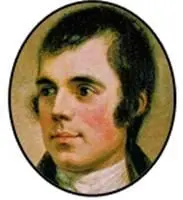
Contents
The Poetry of Robert Burns
ROBERT BURNS: A BRIEF INTRODUCTION
THE COMPLETE POEMS
The Poems
LIST OF POEMS IN CHRONOLOGICAL ORDER
LIST OF POEMS IN ALPHABETICAL ORDER
Glossary of Scots Words
The Letters
THE LETTERS OF ROBERT BURNS
The Biographies
LIFE OF ROBERT BURNS by Thomas Carlyle
THE REAL ROBERT BURNS by J. L. Hughes
ROBERT BURNS by John Campbell Shairp
BRIEF LIFE OF ROBERT BURNS by Allan Cunningham

© Delphi Classics 2013
Version 1
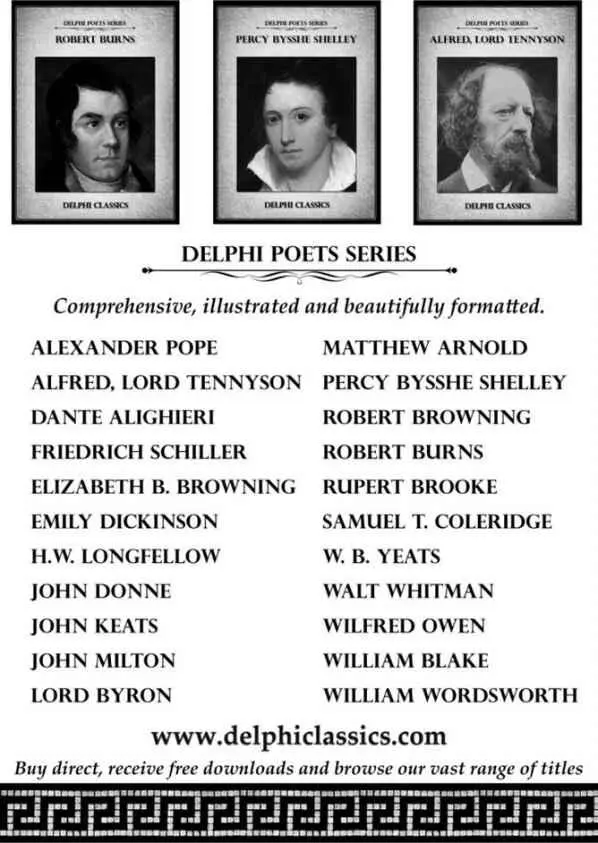

ROBERT BURNS
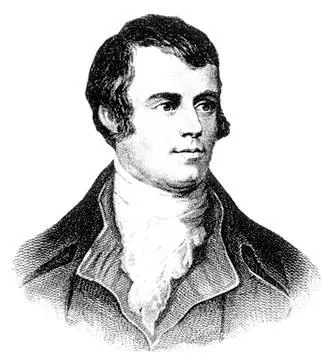
By Delphi Classics, 2013
NOTE

When reading poetry on an eReader, it is advisable to use a small font size, which will allow the lines of poetry to display correctly.
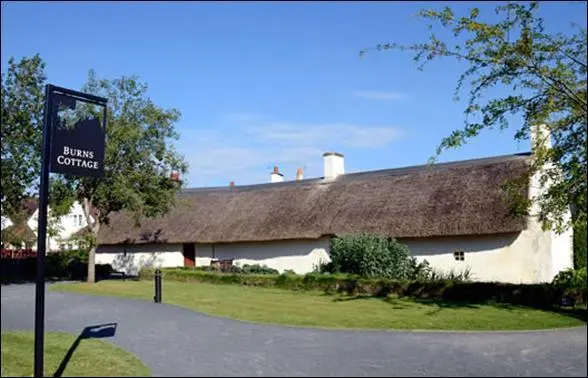
Alloway, Ayrshire — Burns’ birthplace
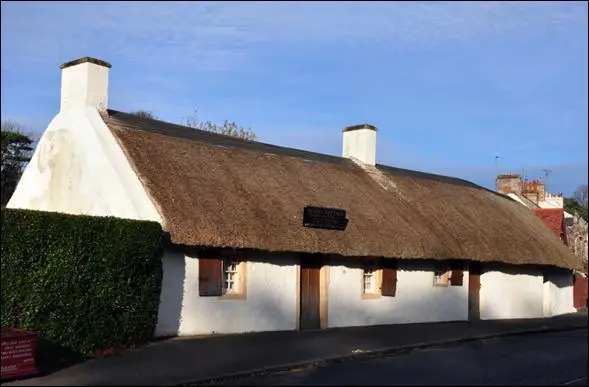
Another view of the birthplace, which now serves as a museum
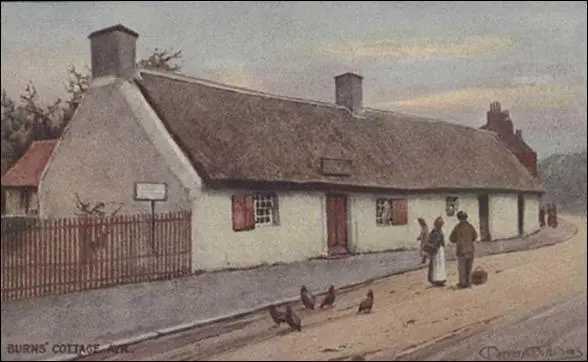
Burns’ cottage in 1910
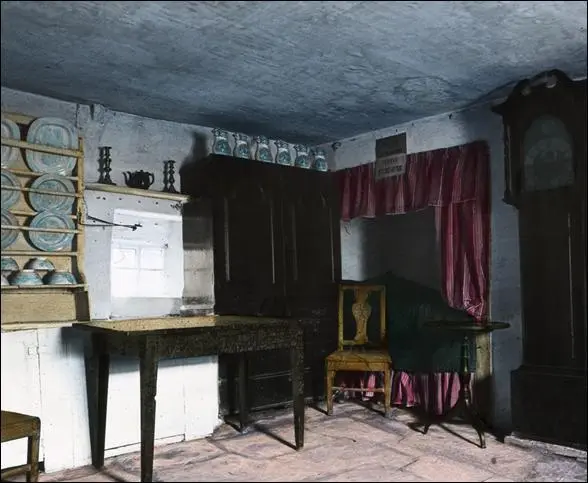
The room in which the great poet was born

Widely regarded as the national poet of Scotland, Robert Burns (1759–1796) is celebrated worldwide as a pioneer of the Romantic movement and one of the most gifted poets the world has ever produced. Best known for having written in the Scots dialect, his work has transcended national boundaries, establishing a worldwide audience and an everlasting fame.
Burns was born in Alloway, South Ayrshire, the eldest of the seven children of William Burnes, a self-educated tenant farmer from Dunnottar, and Agnes Broun, the daughter of a tenant farmer from Kirkoswald, South Ayrshire. The young Burns had little regular schooling and received much of his education from his father, who taught his children reading, writing, arithmetic, geography and history. After a few years of home education, Burns was sent to Dalrymple
Parish
School during the summer of 1772, before returning at harvest time to full-time farm labouring until 1773, when he was sent to lodge with Murdoch for three weeks to study grammar, French and Latin.
Aged 15, Burns was the principal labourer at Mount
Oliphant. During the harvest of 1774, he was assisted by Nelly Kilpatrick, who inspired him to write his first poem, O, Once I Lov’d A Bonnie Lass. In the summer of 1775, Burns was sent to finish his education with a tutor at Kirkoswald, where he met Peggy Thompson, to whom he wrote two songs, Now Westlin’ Winds and I Dream’d I Lay.
Despite his ability as a farmer, William Burnes was consistently unfortunate, often compelled to move his large family from farm to farm without ever being able to improve their circumstances. At Whitsun, 1777, he removed his large family from the unfavourable conditions of Mount
Oliphant to the 130-acre farm at Lochlea, near Tarbolton, where they stayed until the father’s death in 1784.
Burns continued to write poems and songs and began a commonplace book in 1783, while his father fought a legal dispute with his landlord. The case went to the Court of Session and Burnes was upheld in January 1784, a fortnight before he died. Robert made an ineffectual struggle to keep on the farm, but after this failure he moved to the farm at Mossgiel, near Mauchline, which he struggled to work on for the next four years. During the summer of 1784, Burns came to know a group of girls known collectively as The Belles of Mauchline, one of whom was Jean Armour, the daughter of a stonemason from Mauchline.
Burns’ many romantic involvements with women have been well documented over the years, with his first child being born to his mother’s servant, Elizabeth Paton, while he was embarking on a relationship with Jean Armour, who became pregnant with twins in March 1786. Burns signed a paper attesting his marriage to Jean, but her parents sent her to live with her uncle in Paisley to avoid the disgrace. Although Armour’s father initially forbade their marriage, they were eventually wed in 1788. In time, Armour bore Burns nine children, only three of whom survived infancy.
In the meantime, Burns was in financial difficulties due to his lack of success in farming, so, to make enough money to support a family, he took up a friend’s offer of work in Jamaica at a salary of £30 per annum, as a bookkeeper on a slave plantation. At about the same time, Burns fell in love with Mary Campbell, whom he had seen in church while he was still living in Tarbolton. She was born near Dunoon and had lived in Campbeltown before moving to work in Ayrshire. The poet dedicated some of his most celebrated poems to this beauty, including The Highland Lassie O, Highland Mary and To Mary in Heaven. Although some historians now believe that Burns and Mary planned to elope together to Jamaica, she shortly left her work in Ayrshire, to sail home to her parents in Campbeltown. Sadly, she died of typhus in October, 1786.
As Burns lacked the funds to pay for his passage to the West Indies, Gavin Hamilton suggested that he should publish his poems by subscription, providing money for the journey. On 3 April, Burns sent proposals for publishing his Scotch Poems to John Wilson, a local printer in Kilmarnock, who published them on 14 April 1786, on the same day that Jean Armour’s father tore up the paper in which Burns attested his marriage to Jean.
On 31 July 1786, John Wilson published the volume of works by Robert Burns, Poems, Chiefly in the Scottish dialect. Now known as the Kilmarnock volume, the collection sold for three shillings and contained much of Burn’s greatest poems, including The Twa Dogs; Address to the Deil; Halloween; The Cotter’s Saturday Night; To a Mouse; Epitaph for James Smith and To a Mountain Daisy. The success of the book was immediate and Burns was suddenly famous across the country.
Burns postponed his planned emigration to Jamaica and was at Mossgiel when he learnt that Jean Armour had given birth to twins. On 4 September, Thomas Blacklock wrote a letter expressing admiration for the poetry in the Kilmarnock volume, and suggested an enlarged second edition. Burns later recalled:
“I had taken the last farewell of my few friends, my chest was on the road to Greenock; I had composed the last song I should ever measure in Scotland – ‘The Gloomy night is gathering fast’ – when a letter from Dr Blacklock to a friend of mine overthrew all my schemes, by opening new prospects to my poetic ambition. The Doctor belonged to a set of critics for whose applause I had not dared to hope. His opinion that I would meet with encouragement in Edinburgh for a second edition, fired me so much, that away I posted for that city, without a single acquaintance, or a single letter of introduction.”
On 14 December, William Creech issued subscription bills for the first Edinburgh edition of Poems, Chiefly in the Scottish dialect, which was published on 17 April 1787. Within a week Burns had sold his copyright to Creech for 100 guineas. In Edinburgh, he was received as an equal by the city’s men of letters and was a guest at aristocratic gatherings, where he was recorded as bearing himself with unaffected dignity. It was here that he encountered, and made a lasting impression on, the 16-year-old Walter Scott, who described him later with great admiration:
“His person was strong and robust; his manners rustic, not clownish, a sort of dignified plainness and simplicity which received part of its effect perhaps from knowledge of his extraordinary talents. His features are presented in Mr Nasmyth’s picture but to me it conveys the idea that they are diminished, as if seen in perspective. I think his countenance was more massive than it looks in any of the portraits ... there was a strong expression of shrewdness in all his lineaments; the eye alone, I think, indicated the poetical character and temperament.
1 comment